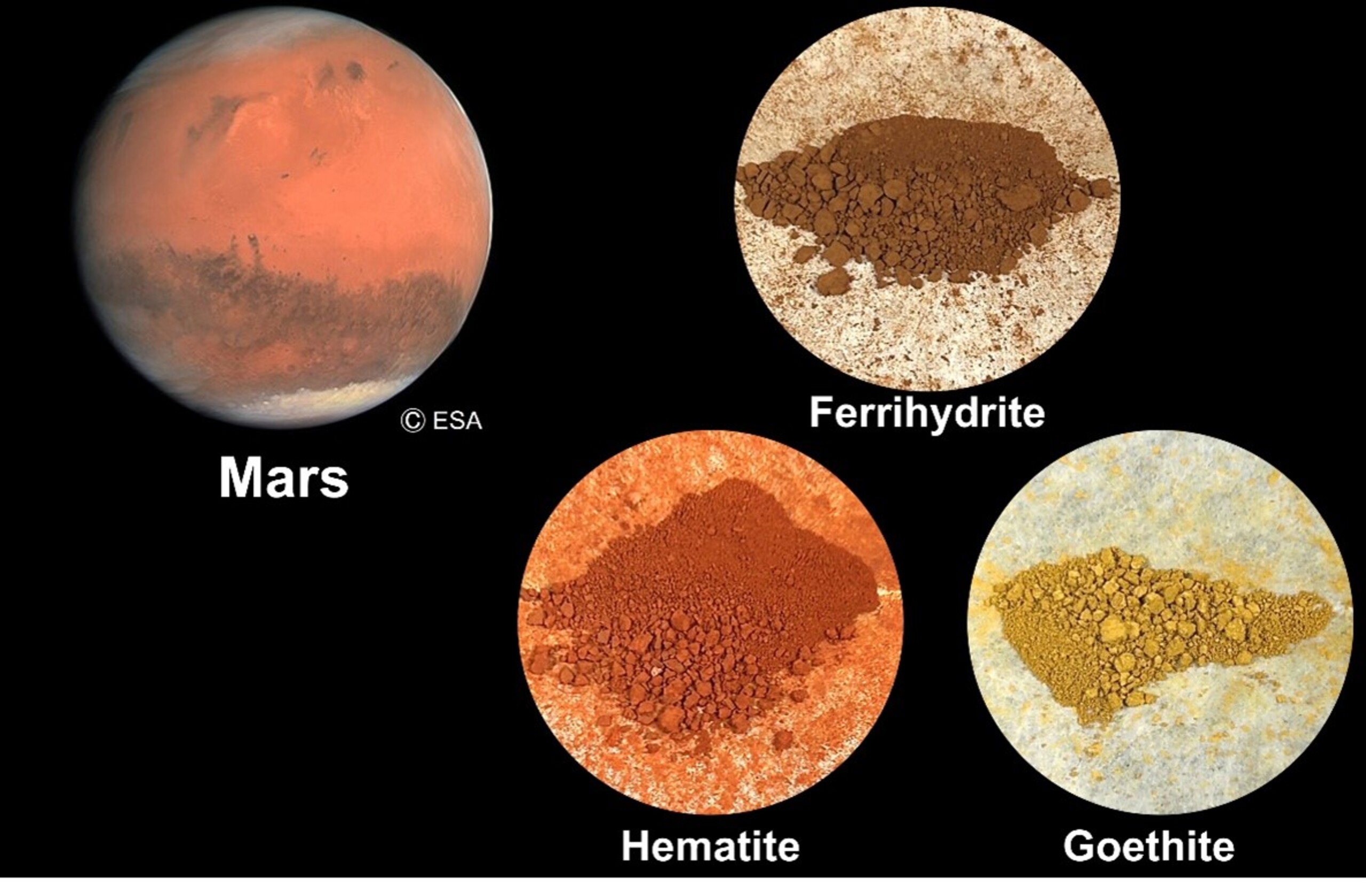A joint research team including So Fukaya, a first-year doctoral student at the Graduate School of Natural Science and Technology, Kanazawa University, Professor Keisuke Fukushi of the Institute of Nature and Environmental Technology, and Professor Yoshio Takahashi of the Department of Earth and Planetary Science, The University of Tokyo, has revealed through laboratory experiments simulating ancient Martian water environments that the salinity of past water on Mars may have influenced the coloration of the planet’s surface.
It is well established that the Martian surface is widely covered with ferrihydrite (*1) and hematite (*2), iron oxides formed through interactions with water, and that these minerals are the primary cause of Mars’s red appearance (Figure 1). Ferrihydrite precipitates from aqueous solutions and is known to transform into hematite over time in the presence of water.
On Earth, ferrihydrite commonly transforms not only into red hematite but also into yellow goethite (*3). However, on Mars, goethite has been found only in limited locations, and until now, it has remained unclear why this mineral—ubiquitous on Earth—is so scarce on Mars.
In this study, the researchers conducted laboratory experiments to examine how ferrihydrite transforms under varying salinity and pH conditions. The results showed that in high-salinity water environments—believed to have existed on ancient Mars—ferrihydrite mainly transformed into hematite regardless of the pH. Notably, under acidic conditions expected during the last wet period on Mars, the formation of goethite was significantly suppressed due to the effects of salinity.
The fact that Mars is a red planet suggests that, during its last wet period, surface water may have been globally saline. Since water salinity is closely related to surrounding environmental and climatic conditions, these findings offer important clues for understanding the evolution of Mars's paleoenvironment and paleoclimate.
The results of this research were published in the online version of ACS Earth and Space Chemistry, an academic journal published by the American Chemical Society, on June 4, 2025.
 Figure 1. Comparison of the colors of ferrihydrite, hematite, and goethite with the surface color of Mars as photographed by spacecraft.
Figure 1. Comparison of the colors of ferrihydrite, hematite, and goethite with the surface color of Mars as photographed by spacecraft.
【Glossary】
*1:Ferrihydrite
A poorly crystalline iron hydroxide mineral commonly formed through the oxidation of iron in water-rich environments. On Earth, it forms from hot spring deposits or through microbial iron oxidation. Recent studies confirm its widespread presence on Mars.
*2: Hematite
A crystalline iron oxide mineral that ranges in color from vivid red to silvery gray. It commonly forms via the transformation of ferrihydrite in aqueous environments and, like ferrihydrite, is known to be widespread on Mars. Its presence on the Martian surface is considered key evidence for the past existence of liquid water.
*3: Goethite
A crystalline iron hydroxide mineral that appears yellow to yellow-brown. Like hematite, it often forms from ferrihydrite in water-rich environments. On Earth, it is commonly found in soils, iron ore deposits, and acid mine drainage.
Click here to see the press release.【Japanese only】
Journal:ACS Earth and Space Chemistry
Researcher's Information:Keisuke Fukushi




 PAGE TOP
PAGE TOP